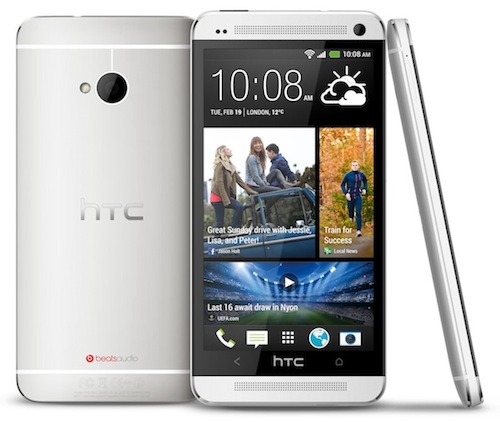
HTC One
Design
When I held the HTC One for the first time, I noticed the curved back and how smooth the metal felt. The glass screen may be slightly smaller than other smartphones on the market at 4.7″, but the feel of the glass seems more refined. The aluminum case seamlessly extends past the glass screen on the top and bottom, which house built-in amps with dual forward facing stereo speakers enabled with Beats Audio. The forward facing camera, proximity and ambient light sensors round out what is located on top.
Around the back of the phone, Beats Audio and HTC logos are visible along with circular cutouts for the Ultra Pixel camera, LED smart flash and a mini hole for the rear facing microphone. Thin strips of white plastic are embedded in the aluminum for the radio antennas.
Several remaining visible parts around the phone include a microSIM card slot on the top left side, a headphone jack and an infrared enabled power button on the top, a metal volume rocker button on the right side and a micro USB 2.0 port on the bottom.
Thin edges on the sides of the screen expand only slightly towards the bottom of the phone, where another HTC logo is located in between two touch sensitive buttons. A back and home button light up when the phone is in use. The completely flat front means there are no physical buttons to depress, which is a design carryover from the HTC One S. Some people that are new to Android might like a physical button to help them migrate easier from other platforms. Not having a physical button on the front made for a cleaner and more elegant design overall.
Speed & Connectivity
The HTC One is in “beast mode” right from the start. That is a popular term used to say that the Qualcomm Snapdragon 600 quad-core 1.7GHz processor handled everything without stuttering. From the processing of HDR images, burst mode photography and switching between playing videos, it performed well. The looks on people’s faces while using the burst photo mode were fun to see. Some of them came up to me to find out what the fast clicking sound was. They were genuinely excited to see that smartphones have evolved to this point.
For a few of the tests, I put it into a power saver mode. I did that because on some days I would burn through a full charge faster than I thought it should. The power saver mode has four options. They are CPU power, Display, Vibration and Data connection.
Over the years, I have found that smartphone displays consumed the most battery during a typical day. Now that 4G LTE is a standard, it along with the CPU speed would be the next two options to conserve power with. Simply tapping the mode to on, afforded me a battery that lasted all day. After a few days of having the mode on, I found that the capability of the device did not diminish to where I would need to turn it off.
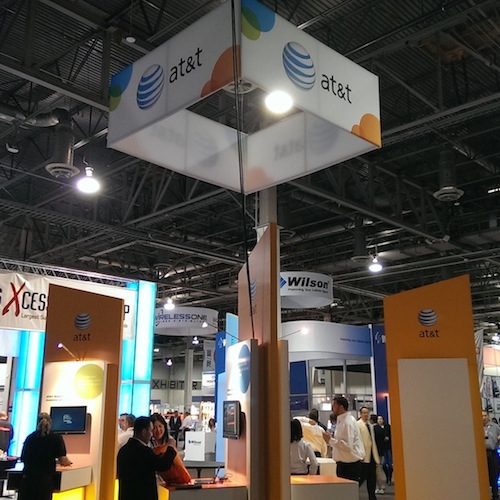
AT&T Booth at CTIA 2013 at the Sands Convention Center in Las Vegas
For those times without access to 4G LTE or when you want to save on your monthly data allotment, the internal WiFi takes the role of connection to the Internet. This device comes with an ace up its sleeve. In addition to the 802.11 a, b, g and n standards, it comes with the newest ac draft. This means that if the router you are connecting to supports it, the HTC One will automatically switch to the fastest possible speed. This is excellent because the handset supports the capability to wirelessly stream media to a DLNA compatible TV or computer.
During testing, I found that the WiFi connection on the One was marginally faster than my slightly older test smartphones on the same WiFi access point. It was able to find more access points than even my computer because it can scan with a greater number of wireless standards. Bluetooth 4.0 with aptX is enabled along with NFC or near field communication on this model.
Bluetooth is important to connect with modern audio equipment including speakers, wireless headsets, car kits and other gadgets. NFC is a developing technology in the US, but is popular overseas. For those that travel and for future compatibility, NFC is a nice feature to be there just in case.
Camera
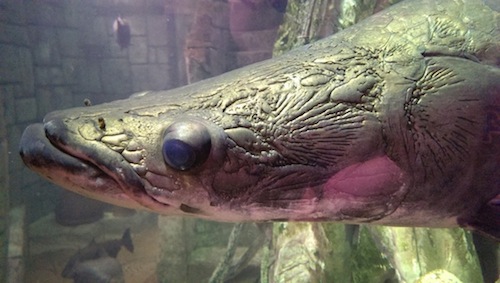
Fish at Shark Experience

Shark at Shark Experience via Burst Photo Mode
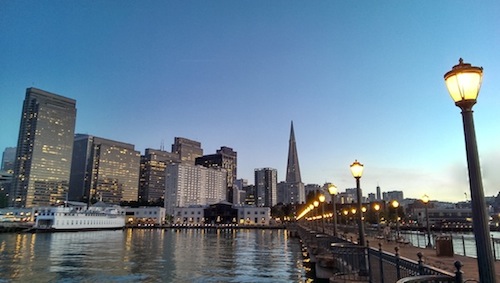
San Francisco Pier at Dusk
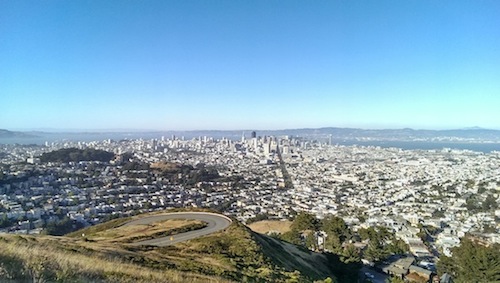
Twin Peaks in San Francisco, California
People that like recording video in slow motion are not out of luck with this smartphone. It did a nice job capturing fireworks and allowed me to playback the video at different speeds.
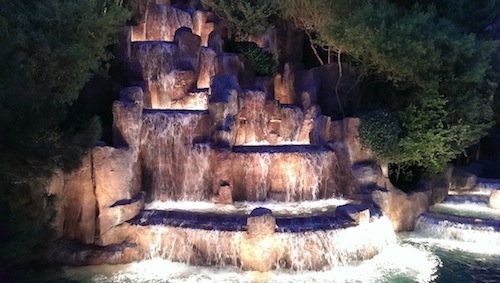
Wynn Las Vegas Waterfall at Dusk
The HTC One is one of the most talked about smartphones in recent memory and has been quite popular with customers from most of the major cellular providers in the United States. AT&T’s 4G LTE speed is certainly the fastest I have experienced in and outside of Las Vegas. As a top smartphone on the market today, the One is an easy yes when deciding what to purchase.
Disclosure: I received a review unit from AT&T. Opinions expressed here are my own.